Reproduction
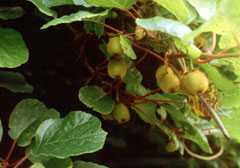 We typically do not think about plant
reproduction but this is the reason I was able to choose the
organism for this project. The reproduction phase of the
Actinidia deliciosa is what creates the fruit that we eat.
We typically do not think about plant
reproduction but this is the reason I was able to choose the
organism for this project. The reproduction phase of the
Actinidia deliciosa is what creates the fruit that we eat.
The fruits from the vines are only possible because kiwifruit is
an angiosperm. As described on the
adaptations page, this means that the plant provides
protection for the ovules and seeds which later become the fruit
but the process begins with pollen.
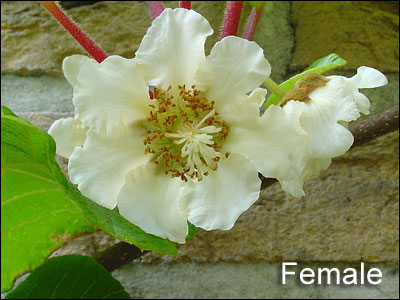
A. deliciosa is dioecious which means that
there is only one sex found on each plant and only female plants
can bear a fruit if pollinated by a male. Pollen is the male
gametophyte that is presented on the anther of a kiwifruit
flower.
In order for reproduction to progress, the flowers need to be
open. The kiwifruit flowers for several weeks in May and June.
The males produce useful pollen grains for only the first two to
three days after opening while the females are able to receive
pollen for seven to nine days after opening. This allows for the
chances of pollination to increase, resulting in greater
reproduction success.
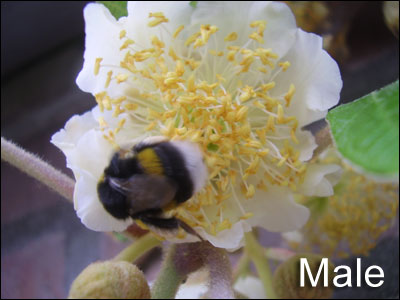
Pollination is a very important aspect of this concept. The
insects in the area, being attracted to the flower (described in
adaptations), pick up the pollen
grains when they land on the flower and transport them to other
flowers. This process can also be accomplished via wind
pollination. In either case, the pollen grain is deposited on
the stigma where, through a series of events, fertilizes the
female gametophyte which sits within the ovary.
If pollination and fertilization are successful, there is a
period of rapid embryo growth. This initial phase is what
determines the shape and size of the fruit. The ovary of the
flower, now containing the growing embryo continues to progress
and eventually develops into the brown, hairy fruit
that we eat. The fruit development phase is actually
particularly long, taking most of the summer months.
The diagram below shows the complete life cycle of an
angiosperm.
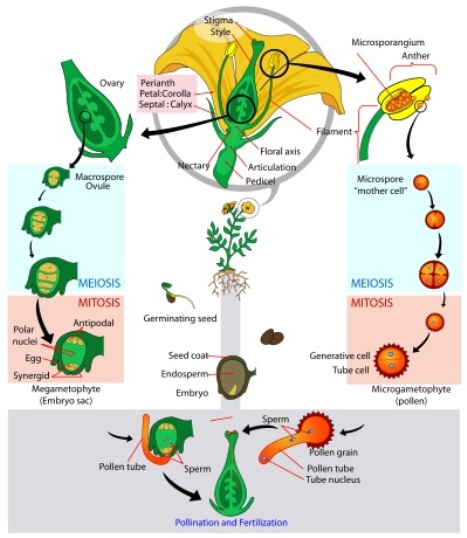
The kiwifruit that is produced is typically two inches in length
and oblong or oval in shape. As seen, the skin of the fruit is
russet-brown and covered in a thick layer of fine but stiff
hairs. The inside of the fruit consists of bright green flesh
and a thick white or cream center.
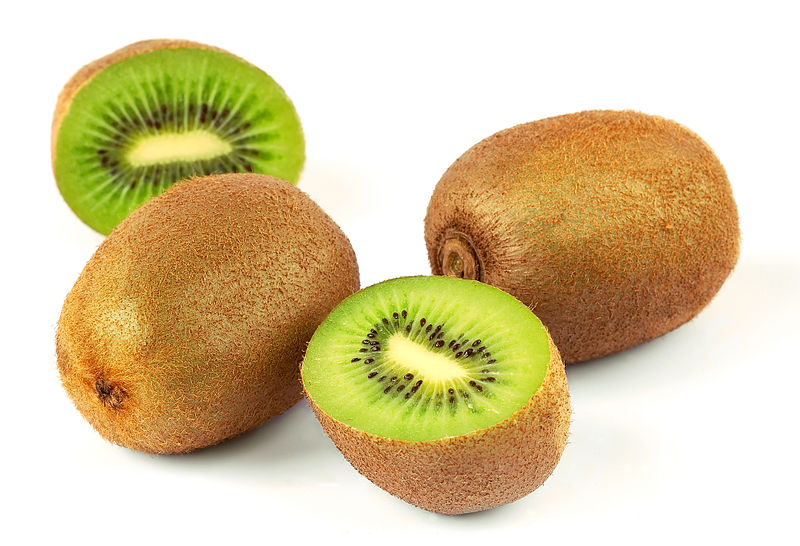
The tiny black seeds that surround the center can be replanted
and if germination occurs, will produce a mature vine. This new
vine can then repeat the process and produce more fruits and
seeds.
The habitat page touched on some of
the conditions needed for successful reproduction. Sunlight is
needed for photosynthesis to occur which provides enough energy
to produce the egg, pollen and flower. A moist soil is necessary
to provide the plant with enough water to produce and grow as
well.
The reproduction of A. deliciosa is extremely intensive
and energy costly but if successful, will produce a fruit to
continue to generate more plants or to provide energy for other
organisms. These relationships are continued on the next page,
interactions.